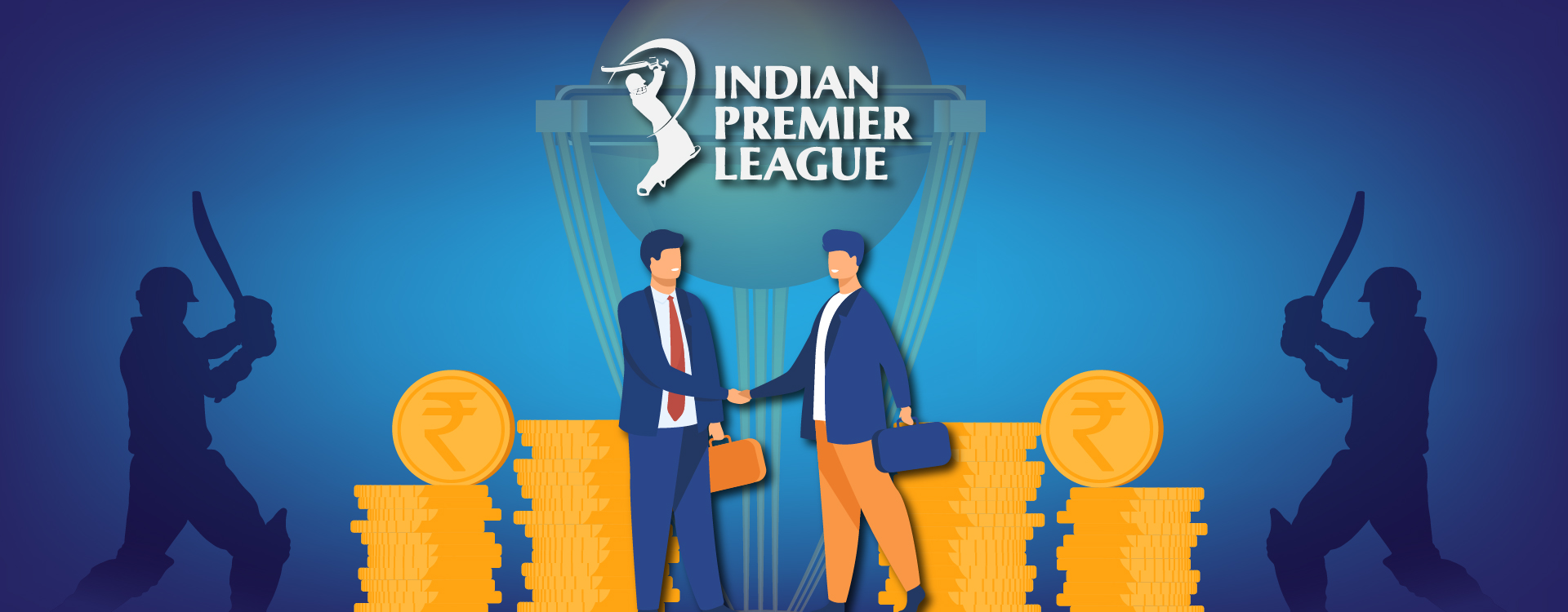The revenue model of Indian Premier League (IPL) is divided into 2 subcategories namely, the broadcast revenue and the sponsorship revenue. The media organisation which wins broadcasting rights for a specific period is liable to pay a yearly amount to the BCCI board.
The other half of the revenue model is the title sponsorship which deems the sponsoring company responsible for paying an annual fee to the board.
‘‘
The two halves of the IPL business model include the cricket board and the many IPL franchises. Revenue distribution between these two entities occurs on a specific ratio of 60:40.

Revenue distribution of IPL-Two halves of the same coin
The two halves of the IPL business model include the cricket board and the many IPL franchises. Revenue distribution between these two entities occurs on a specific ratio of 60:40. Both these revenue streams are collectively referred to as the Central Revenue pool.
The Indian Premier League comprises about 8 franchises, each of which have their own sponsors.
Franchising and its profits in a covid-free scenario
Let us come to terms with the fact that an IPL season henceforth will be missing on major chunks of the revenue. But to really understand about franchising in IPL and the profits it was making, we need to go back in time when Covid wasn’t imagined and a typical game season was in progress:
The franchises gained sponsorship revenue alongside revenue streams including Gate Revenue, Licensing, as well as the 40% percentage from the central revenue pool.
The IPL was once a price tag fest
Although profits have drastically been cut down due to Covid, the $6.8 billion worth IPL was once seen as a price tag fest. Profits came in from every direction, mainly from multiple brand sponsors and franchise partnerships. These sponsorships and partnerships formed the main revenue medium for the entire league.
Ticket sales were a biggie and never a series went by without tickets being sold out. A cut from ticket sales revenue was given to the home team and to multiply this percentage share, every team was granted 7 home games.
Broadcast sponsorship
The media houses earned additional revenue from TRP ratings and advertisements which were shared with the cricket board and the teams subsequently.
IPL is a glamour-driven business model
Everything we’ve gleaned so far just skims the surface. The Indian Premier League is a glamour driven event with multiple big names and celebrities constantly being associated with the teams and games. With so many high-profile names to throw around, the brand value of IPL automatically doubles and quadruples, opening several more opportunities for sponsorships. Depending on which celebrity is associated with the league during a season, their sponsors automatically sponsor the franchises rooted for by the celebrity. When we talk about sponsors here, it’s important to know that they are all big organisations with their own massive brand reputation.
What’s in it for me?
Start-ups are perpetually on the lookout for getting a piece of the glitz and glamour of the IPL. Time and time again, start-ups have been opening their pockets wide and risking their funds just to be associated as a sponsor on the IPL. The biggest reason being that the Indian Premier League is so rich, it beats all other sporting leagues of the world hands-down.
Start-ups view the IPL as sponsorship heaven since it provides a platform for instant, massive, and very wide brand visibility.
But start-ups have now seen a brand-new opportunity to push past legacy advertisers seen as a staple every IPL season and take centre stage post-covid. EdTech and digital payment apps can follow suit from the latest start-up sponsors like PayTM, UpGrad and Cred to pitch in for IPL sponsorship.
Also, mobile gaming start-ups in the league of Dream11 and Mobile Premier League (MPL) have a fair chance at gaining from being an IPL sponsor. Online shopping start-ups can take a leaf out Myntra and Swiggy to consider IPL sponsorship as one which will open up a plethora of opportunities.




